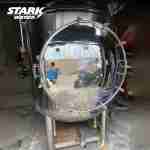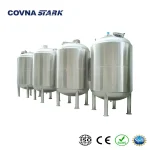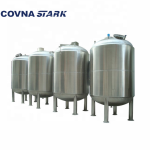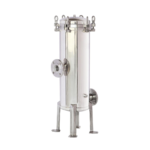Stainless steel water tanks are known for their durability, corrosion resistance, and low maintenance requirements. However, to ensure optimal performance and a service life of 15–25 years or more, regular inspection and upkeep are essential—especially in industrial and commercial environments.
In this guide, we’ll share practical maintenance tips tailored for users of all sizes—from residential rooftops to large-scale industrial stainless steel water tanks.
Why Routine Maintenance Matters
While stainless steel tanks are designed to resist corrosion and structural degradation, they are not entirely maintenance-free. Over time, factors such as high mineral content, stagnant water, extreme temperatures, or improper sealing can lead to issues like biofilm buildup, internal scaling, or gasket failure.
Regular maintenance helps prevent:
- Microbial contamination in potable water systems
- Corrosion or pitting caused by harsh cleaning chemicals
- Valve and flange leaks due to gasket wear
- Reduced water quality from sediment or scaling
- Unexpected downtime in industrial processes
Whether you’re using a SUS316 sterile tank for pharmaceutical applications or a large pressure tank for process water, proactive care extends the tank’s lifespan and safeguards your operations.
Maintenance Checklist & Frequency Recommendations
The following checklist outlines routine and periodic maintenance actions for stainless steel water tanks. Tailoring the frequency to your operating environment (e.g., food-grade, industrial, outdoor exposure) ensures efficiency and safety.
✔ Weekly or Bi-Weekly Tasks
- Check inlet/outlet valve operation for leaks or unusual noise
- Inspect gaskets, joints, and fasteners for corrosion or loosening
- Monitor water level sensors or float switches for accurate readings
✔ Monthly Tasks
- Visually examine the tank exterior for any signs of deformation or denting
- Flush the bottom sediment layer, especially in untreated water systems
- Review pressure relief valve performance (for closed systems)
✔ Quarterly or Semi-Annual Tasks
- Conduct internal inspection via manhole or viewing port
- Check for mineral scaling or biofilm on inner walls
- Sanitize tank if used for potable or sterile applications
✔ Annual Tasks
- Pressure test the tank to ensure structural integrity (recommended for pressure-rated models)
- Replace gaskets, rubber seals, or aging bolts as preventive measures
- Reapply insulation wraps or coatings if applicable
Recommended Cleaning Procedures for Stainless Steel Tanks
Cleaning stainless steel tanks regularly ensures water quality, prevents corrosion, and maintains regulatory compliance in critical industries. The method and frequency of cleaning vary depending on the tank’s use—whether for drinking water, chemical solutions, or food-grade storage.
Step-by-Step Cleaning Process
- Drain the Tank Completely: Ensure no residual water remains. For large tanks, use a sump pump or gravity outlet.
- Flush with Clean Water: Rinse internal walls using low-pressure clean water to dislodge sediment and light debris.
- Apply Cleaning Solution: Use a non-corrosive, food-safe detergent (e.g., citric acid or mild alkali) for general use. Avoid bleach or chlorine-based agents for SS304 to prevent pitting.
- Manual or CIP Brushing: Use soft brushes or CIP spray balls to scrub tank walls. For narrow tanks, insert inspection cameras or rotating spray nozzles.
- Rinse Thoroughly: Flush the tank multiple times with clean water until no residue or foam remains.
- Dry and Ventilate: Leave the tank open to air-dry or use fans in enclosed spaces. Avoid sealing the tank wet to prevent microbial growth.
For sterile or food-grade tanks like the 1500L SUS316 stainless steel tank, consider regular CIP (Clean-In-Place) integration and documented sanitation logs.
Conclusion & Best Practices
Stainless steel water tanks are a long-term investment in water quality and operational reliability. With structured maintenance and proper care routines, these tanks can serve efficiently for decades—especially in demanding industrial or commercial settings.
As a trusted provider of stainless steel water tanks, STARK recommends building a routine checklist, selecting appropriate cleaning agents, and consulting with our engineering team for application-specific advice.
Looking for a new system or a tank upgrade? Explore our full range of solutions:





